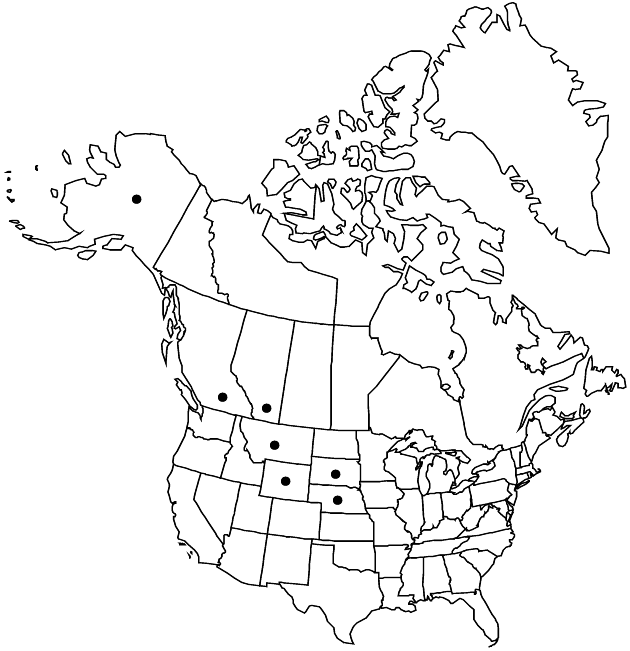Erigeron ochroleucus
Trans. Amer. Philos. Soc., n. s. 7: 311. 1840.
Perennials, (2–) 8–18 (–20, 30) cm; taprooted, caudices usually simple, rarely branched, relatively thick, woody. Stems ascending (greenish), loosely strigose to puberulent-strigose, sometimes sparsely minutely glandular. Leaves basal (persistent) and cauline (leaf-bases broadened or not, not thickened and whitish-indurate); basal blades linear to linear-oblanceolate, (20–) 40–90 (–120) × 1–4 (–5) mm, cauline reduced distally or often little reduced on at least proximal 1/2 of stems, (bases gradually tapering) margins entire (apices acute), abaxial faces glabrous at least on distal 1/4–1/2, strigose proximally, adaxial loosely strigose, eglandular. Heads 1 (–3). Involucres 5.5–7 × 10–15 (–18) mm. Phyllaries in 3–4 series, densely and loosely hirsuto-villous (hairs whitish, without colored cross-walls), minutely glandular. Ray-florets 30–62; corollas white to pinkish, bluish, or lavender, (7–) 8–12 mm, laminae coiling. Disc corollas 2.8–3.6 mm. Cypselae 2–2.6 mm, 2-nerved, faces sparsely villosulous (often hairs spreading); pappi: outer of setae or scales, inner of 12–15 bristles.
Phenology: Flowering Jun–Aug.
Habitat: Rocky or sandy slopes, limestone outcrops, ridges, and talus, meadows, sagebrush-grassland, juniper-mountain mahogany, ponderosa pine, limber pine, limber pine–Douglas fir, alpine tundra
Elevation: 1100–3000(–3300) m
Distribution

Alta., B.C., Alaska, Mont., Nebr., S.Dak., Wyo.
Discussion
Plants recognized as var. scribneri are smaller but otherwise essentially similar to typical plants, except for a tendency to produce bluish rays. They occur mostly at higher elevations than more typical plants. P. Lesica (2005) maintained var. scribneri and mapped the two varietites as essentially congruent in geographic range.
Selected References
None.